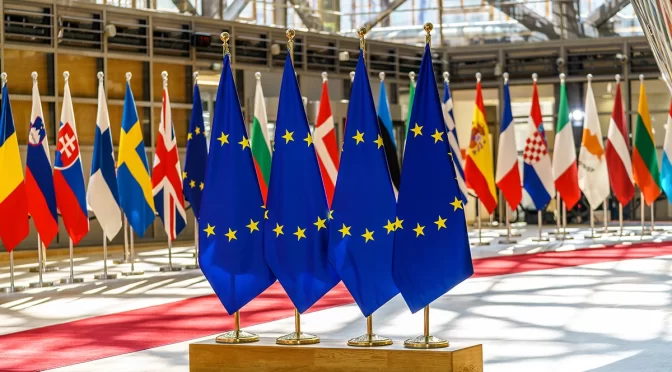The European Union will update its Directive on Renewable Energy to increase the implementation objective until 2030, which will go from 32% to 42.5% in 2030 and will introduce, in a stable manner and not exceptionally as up to now, the obligation that Member States speed up the administrative process to authorize the installation of photovoltaic or wind farms. This procedure may not exceed 12 months in priority areas for renewables and 24 months for the rest, in a process that will include ‘administrative silence’, so that if the corresponding Administration does not pronounce itself within that period, they will be authorized.
“A process today for the construction of a park can last from five to seven years, it is very long,” said the European Parliament rapporteur, the German conservative Markus Pieper, at a press conference from Brussels. “If at the end of 12 months the project is not authorized by the Member States, it is considered automatically authorized”, he stated.
This is how it appears in the provisional agreement that the two institutions have closed at around 7 in the morning to update a directive that, given the development of renewable energies in recent years and the ‘awakening’ to the need for them to replace to gas to fight climate change and avoid energy ‘blackmail’ with it, had fallen short. In addition, the pact closes, momentarily at least, the French counterattack to promote nuclear energy as if it were renewable because the objectives that have been agreed are only for renewables. “It will not be calculated within the renewable targets,” Pieper asserted.
The Council and the European Parliament have agreed to raise that target ten points by 2030, when 42.5% of final energy consumption in the EU must be renewable, although they add that “Member States should strive to reach 45%,” they point out. in a statement this Thursday a few hours after an agreement that will not be known in detail for a few days.
In the transport sector, the pact establishes that the deployment of renewables should lead to a 14.5% reduction in greenhouse gas emissions through the use of biofuels or renewable hydrogen. In addition, European governments must set “an indicative target of at least 5%” of installed power capacity of innovative renewable technologies.
These objectives will have to be assumed by each EU country. In Spain, the Ministry of Ecological Transition is finalizing a review of the National Integrated Energy and Climate Plan (PNIEC) with the purpose of raising renewable targets, which already in 2020 determined 42% of renewables in the final use of energy by 2030 and a 23% reduction in greenhouse gas emissions compared to 1990 in the residential sector, commerce and services, transportation, electricity generation, and industry.
For now, the Third Vice President and Minister for Ecological Transition, Teresa Ribera, this morning celebrated the agreement to update the European directive, through a message on Twitter in which she highlighted how much it has cost to achieve it and in which she has particularly recognized the work of the Spanish socialist MEP Nicolás González Casares, shadow rapporteur for the position of the European Parliament.
In parallel to the increase in electricity generation from renewable sources, the new directive that governments must adapt to their national legislation includes the obligation for them to speed up the administrative process to authorize the installation of wind or photovoltaic farms.
“The legislation will also speed up the procedures to grant permits for new renewable energy generation plants, such as solar panels or wind turbines, or to adapt those that already exist,” the Twenty-seven and the European Parliament have agreed. Specifically, the authorization may not be delayed for more than one year when the renewable park is going to be installed in a priority area or two years when it is located outside them.
Although it significantly shortens them -the renewable energy sector denounces that today it takes up to ten years-, the final agreement doubles the maximum term to process the parks in priority areas, because the initial proposal of the European Commission was nine months and 18 for projects out of these areas.
On the other hand, the directive will also force governments to map their territory to locate the so-called “renewable acceleration zones”, something that in Spain has become a battle horse between the central government and the communities. Ribera insists that it is the regional governments that have to identify them in their territories, but they are dragging their feet to regulate something that is increasingly sensitive due to the reluctance that it raises among some layers of the population. Instead, Ecological Transition has produced an ‘informal’ map.
In general terms, the Renewable Energy Directive establishes an accelerated process for the implementation of renewables that European governments are already applying temporarily and extraordinary during the next two years under the regulation they agreed on in December 2022, which considered the projects renewable energy “of priority social interest” and that cuts the term to authorize it.
This European regulation is the origin of the legislation that a few weeks later the Spanish Government approved to exempt all projects -of any size- from environmental impact assessment if the Administration technicians considered the guarantees on the part of the promoters sufficient in the study of environmental affectation that must accompany these projects.
This legal change raised criticism and protests among environmentalists, defense platforms for rural Spain and also among left-wing parties in Congress, which demand that Ribera repeal it and re-establish the environmental impact assessment for all projects.


